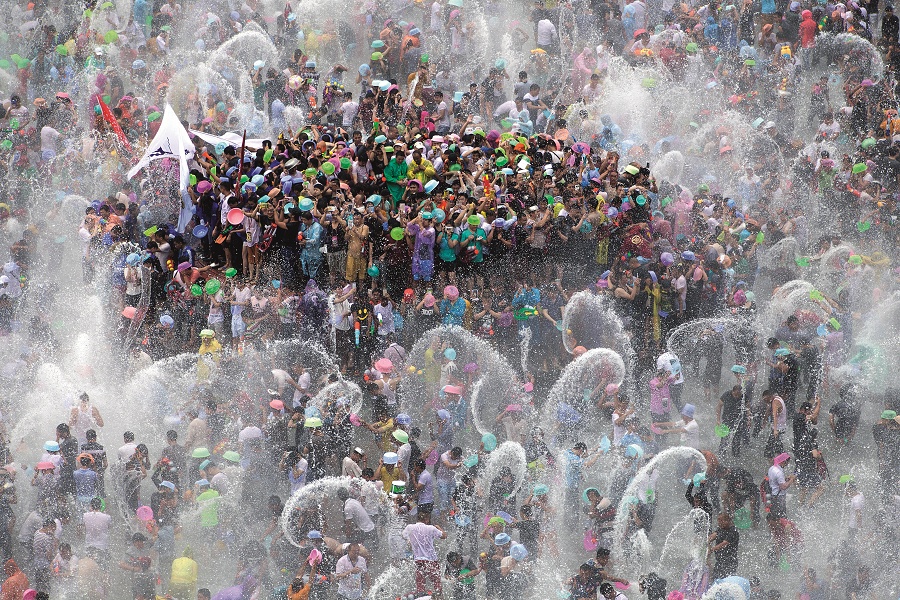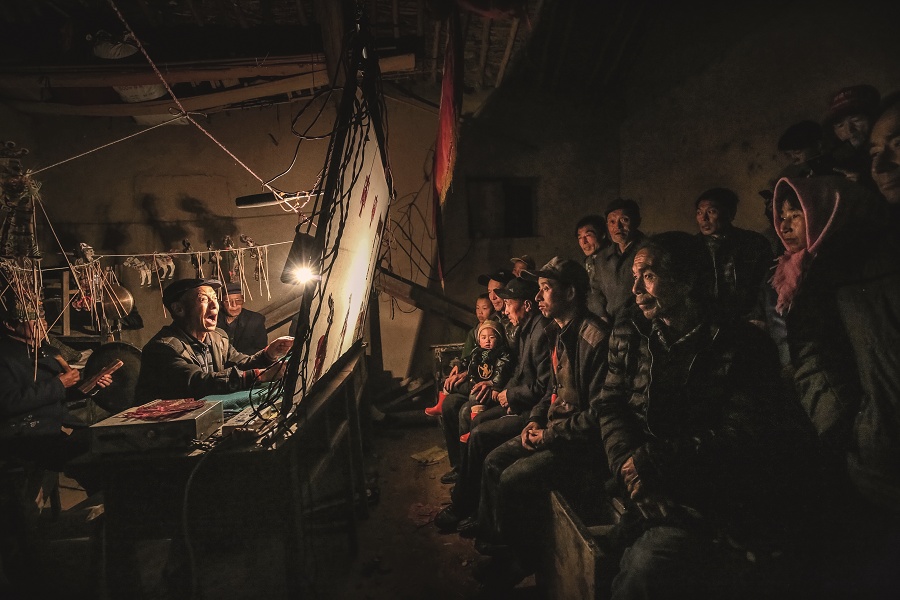Folk Culture Key to Rural Revitalization

Born in the ancient villages, China’s intangible cultural heritage continues shining like a bright pearl in the crown of the country’s traditional culture. It contains rich livelihood resources and represents ecological wisdom, folk culture, and moral norms maintained by local communities. It is a window to China’s past rural life. It advances the sustainable development of contemporary villages and drives the modernization of agriculture and rural areas.
Ethnic Festivals Reinvigorating Villages
Ethnic festivals, a vivid testament to uninterrupted Chinese civilization over 5,000 years, persist as a gem of China’s traditional culture and intangible cultural heritage.
Leishan County in southwestern China’s Guizhou Province is known as the Miao people’s cultural exhibition hub and a good example of integrating ethnic festivals with rural cultural tourism. The celebration of the Miao New Year in the county has attracted hundreds of thousands of visitors since 2000. Countless tourists swarm into Leishan to experience local distinctive ethnic culture and enjoy Miao singing and dancing, creating jobs for locals and raising their incomes.
Many intangible cultural heritage items are created, maintained, and shared by different ethnic groups, reflecting interaction, exchange, and deep integration throughout history.

People enjoy the Water-Splashing Festival at a square in Jinghong City, southwestern China’s Yunnan Province. The Water-Splashing Festival of the Dai ethnic group was included in China’s representative list of state-level intangible cultural heritage in 2006. (Photo from VCG)
In the Zhuang community, younger relatives of seniors often offer them grain on the Chongyang Festival or milestone birthdays to wish them health and longevity. The practice acknowledges that when a senior reaches a certain age, their “grain” or lifetime will run out. So, it is very important for their offspring to “replenish the grain” for them. Similar folk customs have also been long practiced by Han, Yao, Dong, and Maonan people living nearby, who work together to preserve the tradition.
Folklore Traditions Unleashing Potential
Chinese anthropologist and sociologist Fei Xiaotong summarized the cultural foundation of Chinese society in his book From the Soil. In the older days, Chinese people lived together and dwelled in the same place for generations, which built strong bonds of mutual help and moral support. The intimacy of insular villages empowered them to form relatively stable and distinctive customs.

People burn a barge to dispel bad luck during the Wangchuan Ceremony held in Xiamen City, southeastern China’s Fujian Province. The ceremony developed in Fujian and Taiwan was included in China’s representative list of state-level intangible cultural heritage in 2011. (Photo from VCG)
The “soil of China” has been influenced by the wave of modernization since the turn of the 20th century. Major changes have taken place in the labor situation, production technologies, and lifestyles. However, regardless of how a society evolves, the people’s aspirations for a better life with ample food and clothing and further progress in ecology, social harmony, and civility have never changed. In the process of advancing rural revitalization, traditional folk customs have emerged as a precious legacy with huge potential. They are crucial cultural resources necessary for building a beautiful countryside that is desirable to live and work in.
Festivities like dragon dancing, lion dancing, land boat dancing, and lantern shows are still organized in villages and towns in China’s northwestern regions such as Gansu, Xinjiang and Shaanxi. These traditions are passed down across generations and radiate the people’s wishes for a peaceful, happy, and healthy life. Such festival customs have added cultural vigor and injected momentum into rural revitalization.

The folk performance Taige, literally meaning “Lifted Stage,” featuring the legend of “Eight Immortals Crossing the Sea,” attracts many spectators in Pujiang County, eastern China’s Zhejiang Province. The performance was included in China’s representative list of state-level intangible cultural heritage in 2008. (Photo by Hu Lilei)
Many folk customs are based on traditions handed down across generations in certain communities, and reflect wishes to maintain a sustainable connection with nature. The Wangchuan Ceremony originated from a traditional ritual performed by fishermen for centuries and is still celebrated as a marine culture carnival in southeastern China and Southeast Asia. The ceremony and its related practices preserve fishermen’s knowledge of meteorology, tides, ocean currents, and navigation, evoke historical memories of ancestral seafaring, and honor harmony between man and ocean.
Folk Heritage Empowering Rural Revitalization
Folk handicrafts are still practiced in many villages as a way to earn a living. Today, many folk arts and crafts have been listed as national intangible cultural heritage items because of their unique cultural elements, complete technical systems, and distinctive aesthetic and practical value.

A rider performs at the opening ceremony of the Dangjiren horse racing festival in Damxung County, southwestern China’s Tibet Autonomous Region. Dangjiren was included in China’s representative list of state-level intangible cultural heritage in 2008. (Photo by Xu Xun/China Pictorial)
Shejiantai Village in Mianzhu City, southwestern China’s Sichuan Province, is a stronghold for protecting Mianzhu New Year painting, a national intangible cultural heritage item. Over the years, Shejiantai has explored a unique path to prosperity, involving training a professional painting team, leveraging the cultural potential of the folk art, and integrating local New Year painting industries. By the end of 2022, the number of practitioners of Mianzhu New Year painting in the village had soared from 300 to more than 2,000, and the annual output value had grown tenfold to 20 million yuan (US$2.91 million). By combining cultural tourism and painting production in one characteristic village, Shejiantai has become a shining example in the Chinese countryside in protecting and developing traditional folk arts.
Since 2021, China’s Ministry of Culture and Tourism has been collaborating with the Ministry of Human Resources and Social Security and the National Rural Revitalization Administration to support rural revitalization by developing intangible cultural heritage. More than 2,500 intangible cultural heritage workshops had been built across the country as of the end of 2022, of which over 1,400 were located in areas emerging from poverty. These workshops empower local residents to find jobs near their homes and increase their incomes, solidifying the important role of folk handicrafts in rural revitalization.

A folk artist performs shadow puppetry at a temple fair in Pingliang City, northwestern China’s Gansu Province. Shadow puppetry is a form of theater featuring colorful silhouette figures made from leather or paper. (Photo from VCG)